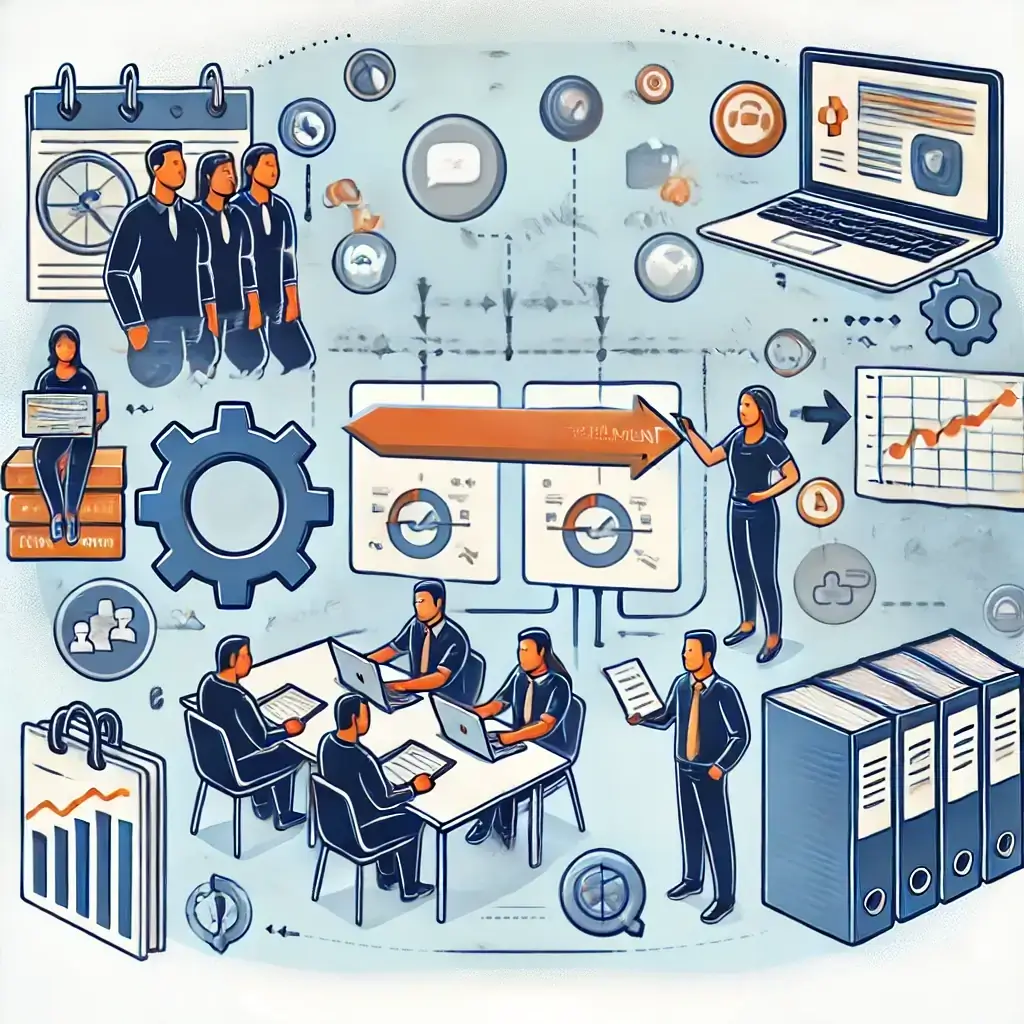· iWork Technologies Team · Product Modernization · 6 min read
Crafting a Migration Strategy for Modernizing Legacy .NET Applications
Discover the key steps in crafting a successful migration strategy for modernizing legacy .NET applications. Avoid common pitfalls to ensure a smooth and effective transition.

In this second installment of our eleven-part series on product modernization, we delve into one of the most crucial aspects of modernizing legacy .NET applications: crafting a robust migration strategy. The success of your modernization project hinges on a well-thought-out strategy that aligns with your business goals, mitigates risks, and ensures a smooth transition to modern technologies. In this post, we’ll explore the key components of a successful migration strategy, from assessing your current state to defining clear objectives and choosing the right migration approach.
Assessment of Current State
Before embarking on any migration project, a thorough assessment of the existing legacy .NET application is imperative. This assessment forms the foundation of your migration strategy and provides valuable insights into the complexity, dependencies, and potential challenges you may face.
Key Areas to Evaluate
-
Architecture: Analyze the current architecture to understand how components interact, identify any monolithic structures, and pinpoint areas that may require significant refactoring.
-
Codebase: Conduct a code review to assess the quality, maintainability, and scalability of the existing codebase. Identify outdated libraries, frameworks, and APIs that need to be updated or replaced.
-
Dependencies: Map out all third-party dependencies, including libraries, services, and databases. Assess whether these dependencies are still supported and compatible with modern frameworks.
-
Performance & Scalability: Evaluate the application’s current performance and scalability to identify bottlenecks and areas for improvement in the new architecture.
-
Security: Conduct a security assessment to uncover vulnerabilities in the legacy system that could be addressed during the modernization process.
By thoroughly understanding the current state, you can prioritize areas that need attention, estimate the effort required for migration, and identify potential risks that could impact the project.
Defining Objectives
A clear understanding of the business objectives is essential to align your modernization strategy with the broader goals of your organization. Without well-defined objectives, the project risks becoming unfocused, leading to scope creep, budget overruns, and failure to deliver the expected value.
Steps to Define Objectives
-
Business Alignment: Engage with key stakeholders to understand the business drivers behind the modernization effort. Are you aiming to improve performance, enhance user experience, reduce technical debt, or enable new features? Ensure that these goals are documented and agreed upon.
-
Technical Goals: Define specific technical objectives, such as adopting a microservices architecture, improving scalability, or integrating cloud services. These goals should be measurable and achievable within the project timeline.
-
User Experience: Consider how the modernization will impact the end users. Are there opportunities to enhance the user interface, improve accessibility, or introduce new features that align with user needs?
-
Cost & ROI: Establish budgetary constraints and define the expected return on investment (ROI). This will help guide decision-making throughout the project and ensure that the modernization effort delivers tangible business value.
Clear objectives provide a roadmap for the migration process, helping you to stay focused on what matters most and ensuring that all efforts are aligned with achieving the desired outcomes.
Phased Approach vs. Big Bang
One of the most critical decisions in crafting a migration strategy is choosing between a phased approach and a big bang migration. Each approach has its advantages and challenges, and the choice will depend on the specific context of your project.
Phased Approach - Advantages
-
Risk Mitigation: By migrating the application in stages, you can reduce the risk of major disruptions, allowing for incremental improvements and validation at each phase. Flexibility: The phased approach allows for adjustments based on feedback and evolving business needs. You can prioritize critical areas first and adjust the roadmap as necessary.
-
Resource Management: It enables better resource allocation by focusing on one component at a time, making it easier to manage team workloads and timelines. Challenges:
Phased Approach - Challenges
- Integration Complexity: As the old and new systems may need to coexist during the transition, managing the integration between the two can be complex. Extended Timeline: A phased approach may take longer to complete, potentially delaying the realization of full benefits.
Big Bang Approach - Advantages
-
Immediate Impact: The entire system is migrated at once, allowing for a faster realization of the benefits of modernization.
-
Simplified Management: There’s no need to manage parallel systems, reducing the complexity of integration and data synchronization.
-
Clear Cut-Over: The transition is more straightforward, with a clear point at which the old system is retired, and the new one goes live.
Big Bang Approach - Challenges
-
Higher Risk: The big bang approach carries a higher risk of failure due to the complexity and scope of migrating everything at once. Potential Downtime: The transition may require significant downtime, which can impact business operations.
-
Resource Strain: The need to allocate extensive resources to the migration process all at once can strain teams and budgets.
Choosing the right approach requires careful consideration of your specific context, including the complexity of the application, business requirements, and available resources.
Common Pitfalls
Even with a well-crafted migration strategy, there are common pitfalls that can derail the project if not addressed during the planning phase.
Avoid These Common Mistakes
-
Underestimating Complexity: Migration projects are often more complex than initially anticipated. Failing to account for hidden dependencies, integration challenges, and technical debt can lead to delays and cost overruns.
-
Lack of Stakeholder Buy-In: Ensure that all stakeholders, including business leaders, developers, and end-users, are on board with the migration plan. Lack of buy-in can lead to resistance, misaligned priorities, and project delays.
-
Inadequate Testing: Insufficient testing can result in critical issues going unnoticed until after the migration is complete. Establish a robust testing strategy, including unit tests, integration tests, and user acceptance testing (UAT).
-
Ignoring Data Migration: Data migration is often one of the most challenging aspects of modernization. Plan for data migration early, ensuring that data integrity, security, and compliance requirements are met.
-
Overlooking Security: Modernization is an opportunity to enhance security. Failing to address security risks in the new architecture can leave the system vulnerable to attacks.
By being aware of these pitfalls and planning accordingly, you can significantly increase the likelihood of a successful migration.
Conclusion
Crafting a migration strategy is a critical step in modernizing legacy .NET applications. By thoroughly assessing the current state, defining clear objectives, choosing the right approach, and avoiding common pitfalls, you can set the stage for a successful migration that delivers lasting value to your organization.
In the next part of this series, we will explore how to design a modern architecture that supports your migration goals, with a focus on modular monolith and microservices-based architectures.
Stay tuned as we continue this journey toward modernizing legacy systems, ensuring that your applications are not only up-to-date but also future-proof.



